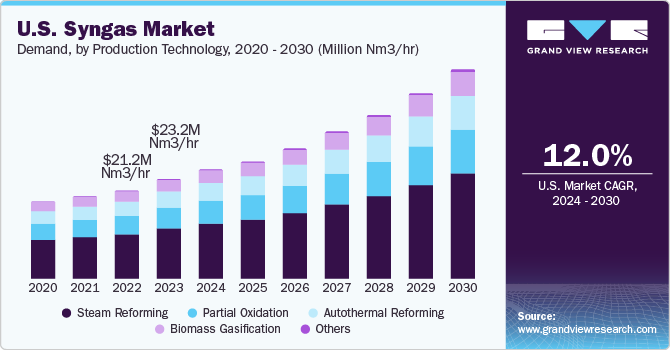News
Syngas Poised for Strong Decade

The energy sector is deep into a very exciting time within its history. The recent emergence and boom of Renewable Natural Gas, along with continued growth of other energy sources like Solar, Wind, and Hydro Power, have the world firmly pointed at a greener future. However, like the previously mentioned Renewable Natural Gas, as well other gas based power sources like Green Hydrogen and Liquified Natural Gas, sits a quietly flourishing gas market that continues to fly under many people’s radars. I’m talking about Synthetic Gas, or Syngas.
Not to be confused with the previously mentioned Synthetic Natural Gas, Syngas is primarily a mixture of Hydrogen and Carbon Monoxide gases whereas SNG is primarily methane. Syngas is also defined by how it is created, in this case, through a process called Gasification.
Gasification is the method where the main principle is to gasify solid waste into a high-temperature gas. During gasification, these solid waste feedstocks are burned at temperatures between 500 to 600°C. Carbon rich feedstocks like coal and petroleum coke are primarily used in the process but biomass and other materials can also be used.
Incombustible materials go down to a furnace and are melted using temperatures above 1000°C. These melted materials are extracted continuously from the furnace, and are divided into metal and slag, which are used in the construction industry.
As for the high-temperature gas, it goes into a boiler and generates steam. The steam goes to the steam turbine and generates electricity by driving a generator. The gas that leaves from the boiler after heating up the water is inspected for toxicity and is finally extracted from the plant by a chimney.
If this is conjuring thoughts of coal furnaces in steam trains, that’s because this process is far from new. It’s actually been around since the early 1800s. In fact, according to website Science Direct, Syngas’ first commercial use was by the London Gas, Light, and Coke Company in 1812. Since then, the methods and techniques have benefited from over 200 years of increased sophistication.
Continuous advancements in gasification technologies have led to much more efficient Syngas production processes. This, in turn, has reduced costs and has improved the economic viability of Syngas projects. While carbon rich feedstocks like coal have traditionally been the primary source of Syngas, many are optimistic about its versatility and potential to seamlessly transition away from fossil fuel based sources.
According to website Grand View Research, the global syngas market demand was estimated at over 230 million Nm3/hr in 2023 and is expected to grow at a combined annual growth rate of 11.3% from 2024 to 2030. The aforementioned rising demand for cleaner alternatives fuels is expected to drive market growth. In addition, growing government support for clean energy initiatives, including tax credits and renewable portfolio standards, incentivizes investments in syngas technologies, fostering market expansion.
In addition, stringent environmental regulations, such as the Clean Air Act and carbon emission reduction targets are driving demand for cleaner alternatives in various industries. Syngas can help industries in forming compliance with these regulations by offering a lower-emission fuel alternative.
All signs point to Syngas continuing to be a cornerstone of the American energy market and continuing to grow at a competitive rate for investors and those looking to foster their own projects. The Syngas train isn’t slowing down, which makes sense because it’s been powering trains for over 200 years. It may continue to do so for 200 more.
For any questions, call Diamond Scientific at (321)223-7500 or visit DiamondSci.com. Diamond Systems LLC is a Veteran Administration verified VOSB Certified Company.


